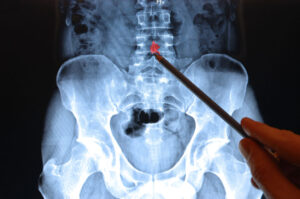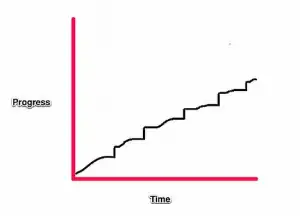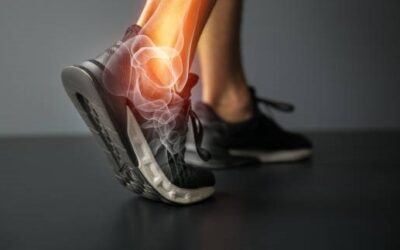If you are looking to avoid surgery for your back pain, you are in the right place.
With all the research currently out there about conservative treatment versus surgical treatment, it should almost be a no-brainer that people should avoid surgeries at all costs.
Unfortunately, that isn’t the case. We still have ‘Dinosaur’ clinicians who are stuck in the old ways of ordering an image and getting set for surgery almost immediately after their appointment. There have been a lot of advances in the medical field, but most certainly there must have been a significant rise in surgeries once imaging machines were introduced.
And then you have your generations who were brought up with the mentality that surgery will fix everything. Sadly, this has not been shown to be true!
For some, surgery is necessary and should be treated with some urgency. For instance, if there is a significant progressive neurological deficit, cauda equina syndrome, cord/root compression, etc. Those may need more aggressive interventions.
But, MOST back pain is not sinister! In fact, roughly less than 5-10% of all back pain requires surgical interventions!
So, what can you do to avoid back surgery?
These are the tips I would give my mom if she came to me with complaints of back pain:
1) Time is on your side
I completely understand how busy life can be. Add in a sprinkle of back pain and you are going to be more stressed out and really trying your best to not enjoy this life. Just take it easy!
You’ll see later in my tips that this advice might seem like it is countering my other points, but it is not. Rest can be a good thing! You just flared up your back and now you can’t do as much.
You feel guilty for not being able to make the same types of meals for your family as you used to.
Your spouse is now having to take on more duties in the household.
This is not the time to feel guilty about resting and not getting to everything! It is ok to let things settle down a little bit before you get moving again.
2) Don’t be quick to get a scan
Again, this may have been believed to be true back in the ‘Dinosaur’ clinician days. You feel pain. Take a picture. Fix the “abnormality” in the picture. Boom, move on…
But not so fast…

Once you have surgery, there is no going back. Seeing “abnormalities” on an image is considered normal now. How do you know what the image is showing is really causing the pain? Pain is much more complex than that.
For instance, if I had you and your brother sitting next to each other and I poked both of you with a pin in the same exact spot on your arms, with the same amount of pressure/force, would you both rate the pain the same? What is painful for one person may not be for the other person.
Just like seeing something on an image might not be painful for one person but is for another.
Receiving an image will most likely lead to some sort of surgical intervention, so if you are looking to avoid surgeries, avoid imaging as well.
3) Always remember that pain does not mean damage
Going with my above example with your brother and you being pricked, you two did not perceive the pain with the same number on the 1-10 scale. One said 2 and the other said 6.
How can that be?
The intensity in which you feel the pain does not mean there is more damage happening. It can be a topic for another day, but the pain is way too complex to be that simple.
Let’s say you haven’t eaten anything all day. It is coming dinner time and you haven’t eaten anything all day because you were out in the yard. You were digging trenches in the heat, not feeling any slight bit of hunger. Just the enormous thirst.
By the time you go inside and cool down, you may get excruciating pain in your stomach. Growling starts to kick in, almost making you fold in half because of the hunger pains. Does this mean there is damage going on inside your body? No, your body uses pain to let you know you need to eat.
Just like pain lets you know something is pissed off and you better be aware of it.
4) Find an activity you like and can tolerate and progress from there
Nobody likes to do things they don’t like to do. So why don’t you start by doing something that you like?
It sounds so simple, but you can’t take away all of your joys in life because of pain.
If you liked to run, how about starting with a simple walk? Can you tolerate 10 minutes without pain? Good, try 15 minutes next time.
If you liked lifting weights at the gym and went usually went for an hour, why not start by going back for 20 minutes? Reduce the amount of weight you are lifting. Limit your range of motion on the compound lifts. Etc.
There are many ways to find your entry into exercising again. It is important for you to find a way to get back to your active lifestyle as quickly as you can to reduce the risk of long-term pain and disability!
I want to make sure you realize this sounds like it might contradict point number one, but I assure you it doesn’t. I understand you are going to need some time to decrease the new pain, but keep in mind you can’t keep resting forever and just hope that the pain will go away one day.
It is vital to start re-introducing activities after an adequate rest period.
5) Progress is not linear

This is one of the toughest ones for people to realize. Progress towards getting rid of the back pain is not linear! It just doesn’t work like that.
You will have times that you rested too long and now your back is stiffer and achier.
There will be times you do too much and now the grabbing pain in your back might be back.
The important thing is to take a step back and look at the big picture. You should still be progressing in the right direction. Maybe this time the pain isn’t as sharp in the back. The stiffness went away faster this time than last. Etc.
You can not expect a fast result. And to be honest, that is even true with surgery. Most people think there is a magic pill or magic surgery that will make all the pain instantly go away…that doesn’t happen.
BONUS) Seek out a skilled clinician who is up to date on the current recommendations for those suffering from back pain.
There you have it. Five tips I would give my own mom if she were having back pain.
Are you having trouble with any of these tips? Please reach out so we can get your questions answered! You can apply for a Discovery Visit where we can discuss your pain and which of these steps you might be missing.
Not ready for a Discovery Visit?
That’s ok! We have a free help guide for you to download to get started on your journey to avoiding surgery, stopping pain medications, and getting back to your active life! Download here




